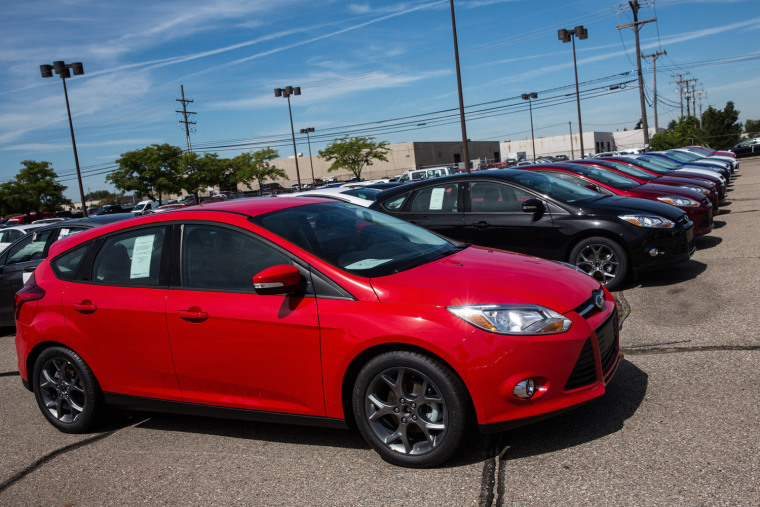When Ford launches its new Lincoln dealer network in China next year, the maker plans to begin stocking those showrooms by importing vehicles from the United States, rather than building them locally.
While it will add significant duties to the price of models like the Lincoln MKZ it will give Ford a bit more flexibility – and save it the hefty capital investment that would otherwise be required to tool up a line in China, company officials tell TheDetroitBureau.com.
But it’s not just Lincoln products. In fact, the Detroit maker is increasing the number of vehicles it ships to China even as other manufacturers – such as General Motors’ Cadillac brand – continue to reduce that flow of exports while continuing to increase local Chinese production.
Among the many models Ford is exporting to China are the specialty Focus ST and Fiesta ST models, notes Dave Schoch, the president of the maker’s Asia/Pacific region, and the numbers are growing with Chinese demand for those two performance models up 200 percent for the first nine months of 2013.
In fact, Ford is planning to increase the shipment of U.S. and Canadian-made products to China by as much as 40,000 units annually as it finally gains traction in the booming Asian market, the maker has confirmed. That would be a big jump from the current number of 16,405 vehicles during the January through September period.
(Read also:Ram's Big Diesel Named Texas Truck of the Year)
Among the two vehicles dominating that flow of product will be the Edge and Explorer utility vehicles.
“As part of our plan to offer a full family of SUVs to Chinese consumers, we began importing the Ford Explorer from the U.S. to China this year,” the maker noted in an e-mail published by the Detroit News. “Explorer joins our locally produced EcoSport and Kuga, as well as Edge, which is imported from Canada.”
According to Ford, “the vast majority” of the products it now sells in China are produced locally,” but the maker is still playing a game of catch-up, trailing key rivals such as General Motors and Volkswagen AG after getting off to a slow start in the booming Chinese automotive market – now the world’s largest.
But with sales up 51 percent for the first nine months of 2013, Ford is struggling to keep up with demand using its current assembly capacity. “I’d like to be going faster,” Schoch said during a media round table. But while “We have the products and we have the demand,” he acknowledged, “We need the capacity.”
The maker is currently in the process of adding two new Chinese assembly plants, as well as three additional power train factories to keep up with its anticipated growth.
Even so, that doesn’t necessarily mean that it will eventually stop exporting vehicles from the U.S. – or Canada or Europe, for that matter – to China. In some cases, it simply won’t be able to justify the cost of producing some low-volume models there, just as Ford relies on overseas production for some limited-run offerings in the States.
(Read also: Chrysler Facing Crisis as Launch of New Jeep Cherokee Delayed)
But as volumes increase, so will the list of products built in China. Eventually, if Lincoln catches on, at least some models will shift to Chinese factories, Lincoln’s global brand boss Jim Farley told TheDetroitBureau.com earlier this year. That could be a significant sales booster because it would eliminate import duties – which are particularly onerous on foreign-made luxury vehicles.
Curiously, while the Lincoln brand’s official Chinese debut is still almost a year away, American-made models are already on sale there, Schoch learned to his surprise when he took over the Asia/Pacific business unit last year. Heading to his new office in Shanghai, the executive discovered a Lincoln dealership – or at least one that looked like the real deal. It was actually one of many gray-market outlets that used import loopholes to bring over some Lincoln products without official corporate sanction.
It’s not clear what Ford plans to do with those unofficial Lincoln dealers once it officially launches the brand in China in 2014.
But one way or the other, Ford is hoping that the move will give a boost to Lincoln which has been struggling for survival in recent years. Schoch noted a study by IHS Automotive forecasting that total Chinese motor vehicle sales could reach 32 million by decade’s end, more than the U.S. and Europe combined.
Along with crossovers, luxury vehicles make up two of the market’s fastest-growing product segments – which, for now, bodes well for American-made crossovers like the Ford Edge and Explorer, and for Lincoln.
